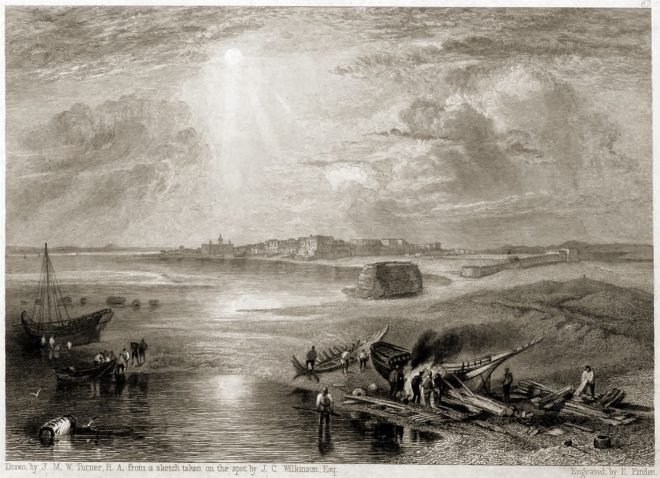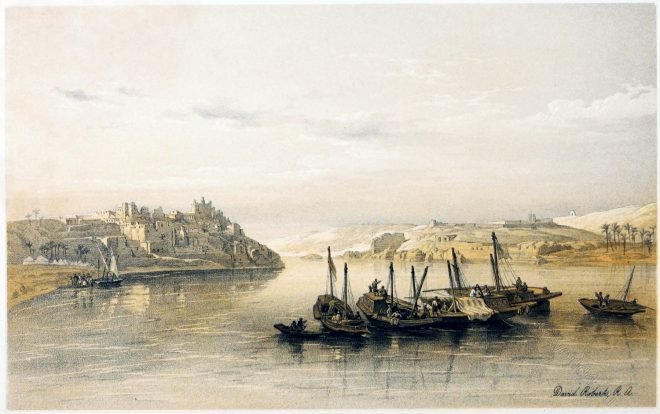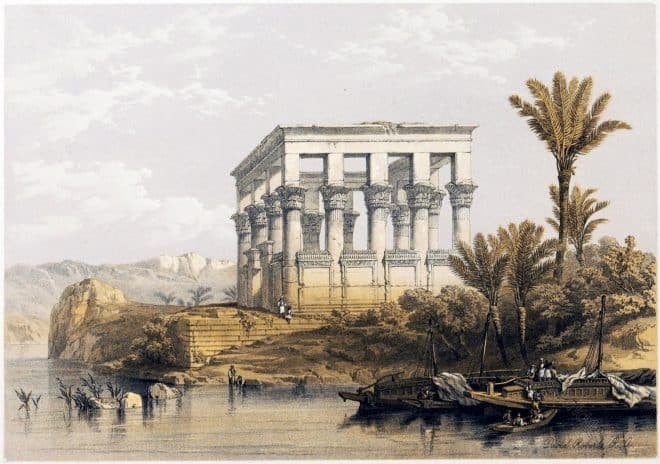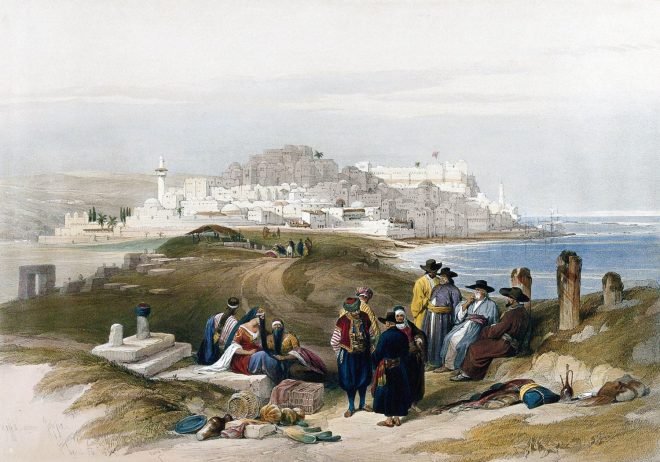Colossal Statues in The Plain of Thebes, during the Inundation of the Nile. Two ancient Egyptian colossal statues standing side by side from the 14th century BC.
Category: Middle East
The Red Sea, and the port of Suez. Landscape Illustrations of the Bible.
The Red Sea separates Egypt from Arabia. The Port of Suez stands at the mouth of the canal which formerly united the Red Sea with the Mediterranean.
Aswan the ancient Syene and the island of Elephantine.
Aswan was the ancient Syene; in the Coptic language it signified an opening, derived from the sudden widening of the Nile below the Cataracts.
View from under the Portico of the Temple of Dendera, Egypt.
The Temple of Dendera is an ancient Egyptian temple complex in Dendera, 55 km north of Luxor in Upper Egypt. It is one of the most important temple sites in Egypt and was dedicated to the goddess Hathor.
The Pyramids of Giza. The Great Pyramid of Cheops.
The Pyramids of Giza. The Great Pyramid of Cheops. Pyramids of the pharaohs Khafre and Mykerinos.
The Hypaethral Temple at Philae, called the Bed of Pharaoh.
The Hypaethral Temple of Philae by David Roberts. The Holy Land, Syria, Idumea, Arabia, Egypt, and Nubia.
Front Elevation of the Great Rock Temple of Abu Simbel, Nubia.
Abu Simbel (Egypt), Great Rock Temple (built under Ramses II 1290-1224 BC). Exterior view.
Watercolour, 1838/39, by David Roberts (1796-1864). Engraved by Louis Haghe
Jaffa, ancient Joppa, as the chief harbour of Judaea.
Jaffa, the ancient Joppa, and now called by the Arabs Yafa, rose into early importance, as the chief harbour of Judaea.
View of the Damascus Gate, leading into Jerusalem.
The Damascus Gate or Bab al-Amud, is one of the main gates and the largest city gate of the Old City of Jerusalem.
The Holy Land. Jerusalem from the road leading to Bethany.
View of Jerusalem from a distance. The city is called by the Arabs, El-Kuds (the Holy); and also by Arabian writers, Bek El-Mukaddas (the Sanctuary).










